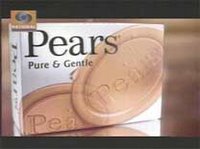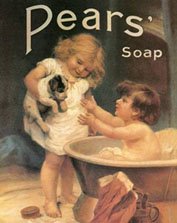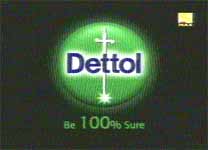The Logic of Brand Extensions
Originally Published Here at Adclubbombay.com
Brand extension is a strategy where the company uses an existing brand name to launch products in the existing or new category. This brand extension strategy is often the most used growth strategy for brands by marketers. The popularity of this strategy has given rise to a host of discussion among the academic and professional community about the efficacy of brand extensions.
Why Marketers go after brand extensions?
Exploiting existing brand’s equity
Brand extensions often are perceived to be a less risky strategy for launching new products. The logic behind using the existing brand name for new products is to exploit the brand equity of the existing brand. Recently Sundrop which is a famous sunflower oil brand launched Sundrop Peanut Butter. The use of the prominent brand in the new product is expected to trigger trial usage by the consumers of the parent brand.
Costs of launching brand extensions are low
Compared to launching new brands, brand extensions are perceived to be less costly to launch. The reason is that both the channel members and the consumers are familiar with the brand. Hence the extensions are tapping on the existing awareness of the brand. The marketers can thus use their budget to increase the trial usage rather than spend money on creating brand awareness. In one way using existing brand names helps marketers to skip one step in their brand building process.
Experiment
Brand extensions also prompt marketers to explore new categories for the brand. Since the cost of launching brand extensions are lower compared to a new one motivate the marketers to leverage the existing brand’s equity into new categories.
Expand
Brand extensions also expand the scope of the brand. Ponds, which started off as a cold cream, is now an umbrella brand that endorses a wide range of beauty products. Dettol which is a highly successful antiseptic lotion brand has now a basket of products ranging from soaps to plasters. The brand extensions increase the scope and turnover of the brand and thus give more revenue to the firm.
Brand Extensions have its own set of negatives. Brand extensions are based on some assumptions which if gone wrong can affect the parent brand’s equity.
One assumption in brand extension is that consumers like the brand hence will like all the products endorsed by the brand irrespective of the categories. The second assumption is that the parent brand’s equity can be leveraged across various categories. Hence brand extensions will have similar positive equity as the original brand.
Critics argue that brand extensions will dilute the original brand’s equity. Sometimes there is a proliferation of extensions that dilute the parent brand’s positioning. So when a soap brand extends itself into shampoo, the core identity of the brand as soap is now irrelevant. If not clearly defined, the parent brand may lose its product associations in the consumer’s mind.
Another danger in brand extensions is the positioning confusion. For brands which are extending to related-categories are better off in positioning because the brand can continue with the same positioning when extending to related categories. But when the brand is moving to unrelated categories, the same positioning may not work in the new category. A change in the positioning for brand extensions will have adverse impact on the original brand’s position.
However, brand extension is an invaluable strategic tool for marketers looking for expanding the scope of the brand. Marketers have to get their basics right before embarking on the extension strategy.
To Extend or Not to Extend
This may sound too basic a question but every marketer should ask this question about the brand.
“Whether this brand should be extended in future?”
The future of the brand lies in this question. For a new brand, the decision to extend or not to extend in future will have its implication in the selection of brand name and positioning. A brand name which is highly associated with a product feature or category will have limited scope for future extensions. The positioning strategy will also have to be crafted in a manner which will facilitate future brand extensions. For an existing brand, this question will bring about a need for a change in the current positioning strategy.
Have a Vision
The most important task for a marketer looking for brand extension is to have a vision for the brand. Brand extensions as a short-term marketing strategy will be damaging for the parent brand. The development of a long term vision starts with the critical questions as to whether the brand should be extended or not. Once the marketer has decided on the extension, he has to chart a growth path for the brand. The vision involves deciding whether the parent brand should be used as an umbrella brand or as an endorser. Should the brand be used for unrelated extensions or limited to a category?
The careful planning of the brand’s future will eliminate lot of confusion in terms of positioning, category decisions etc.
Line Logic
Marketers should be clear about the impact of a line or brand extension on the product line of the company. Authors John Quelch and David Kenny in an Harvard Business Review article – Extend Profits Not Product-lines suggest that the company sales officers should take a line logic test where they should be able to explain in one sentence, the strategic role played by each SKU (stock keeping units) in the product line .The consumer should also be able to understand the how these extensions fits his/her needs.
Focus
The biggest threat of brand extension is the possible loss of focus on the parent brand because of extensions. Brand Extensions are opportunities for growth. While extending, marketers should not forget that the extensions are based on the equity of the original brand. Any change in the marketing mix strategy of the extensions will have an effect on the parent brand. This strong relationship between the extensions and parent brand should be taken into consideration during every brand promotions.
Lost Opportunity
Every brand extension is lost opportunity to build a new brand. While extensions take away lot of pressure from the marketers, one should have a clear understanding about the potential loss of an opportunity to build a new brand.























